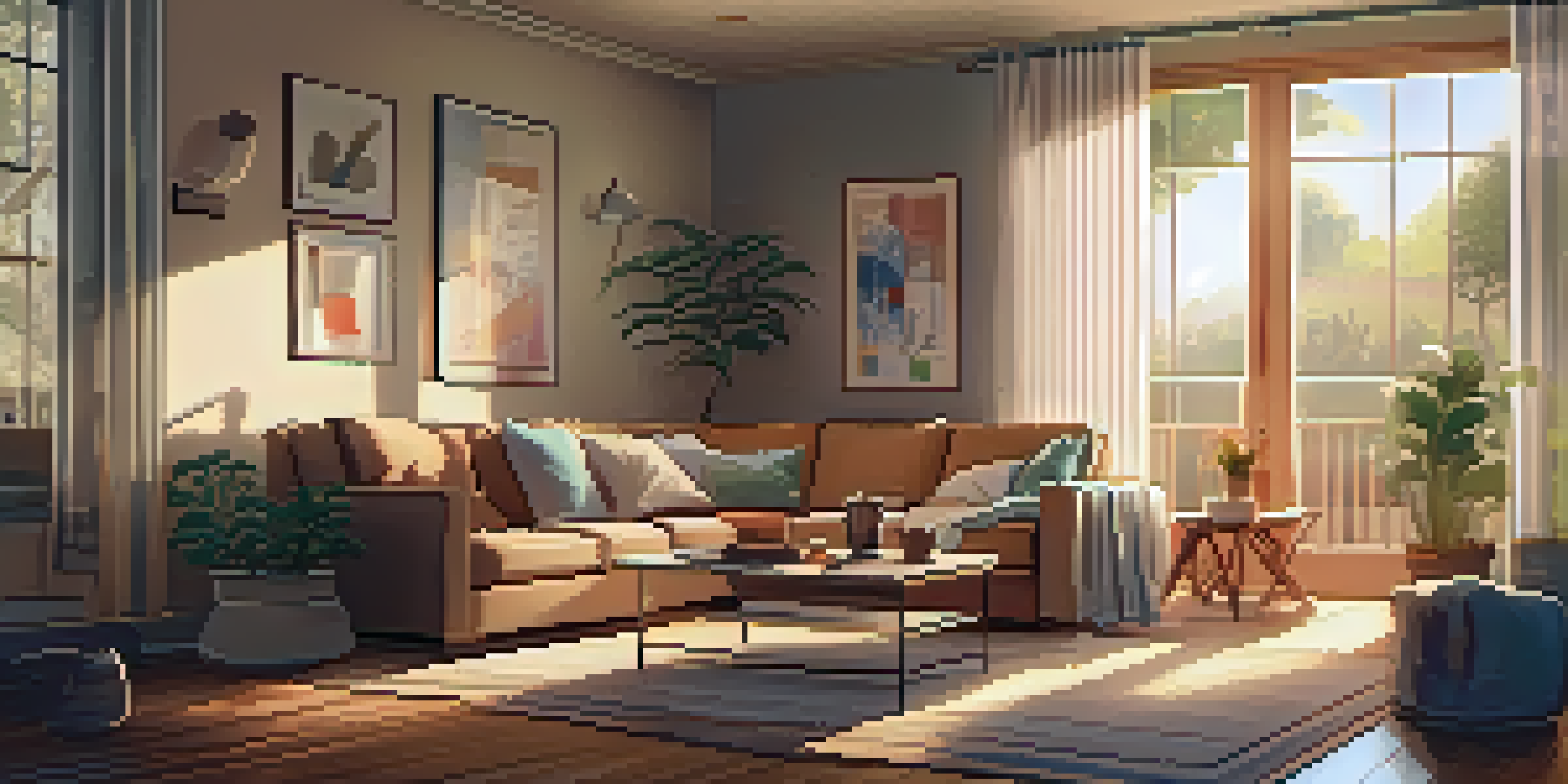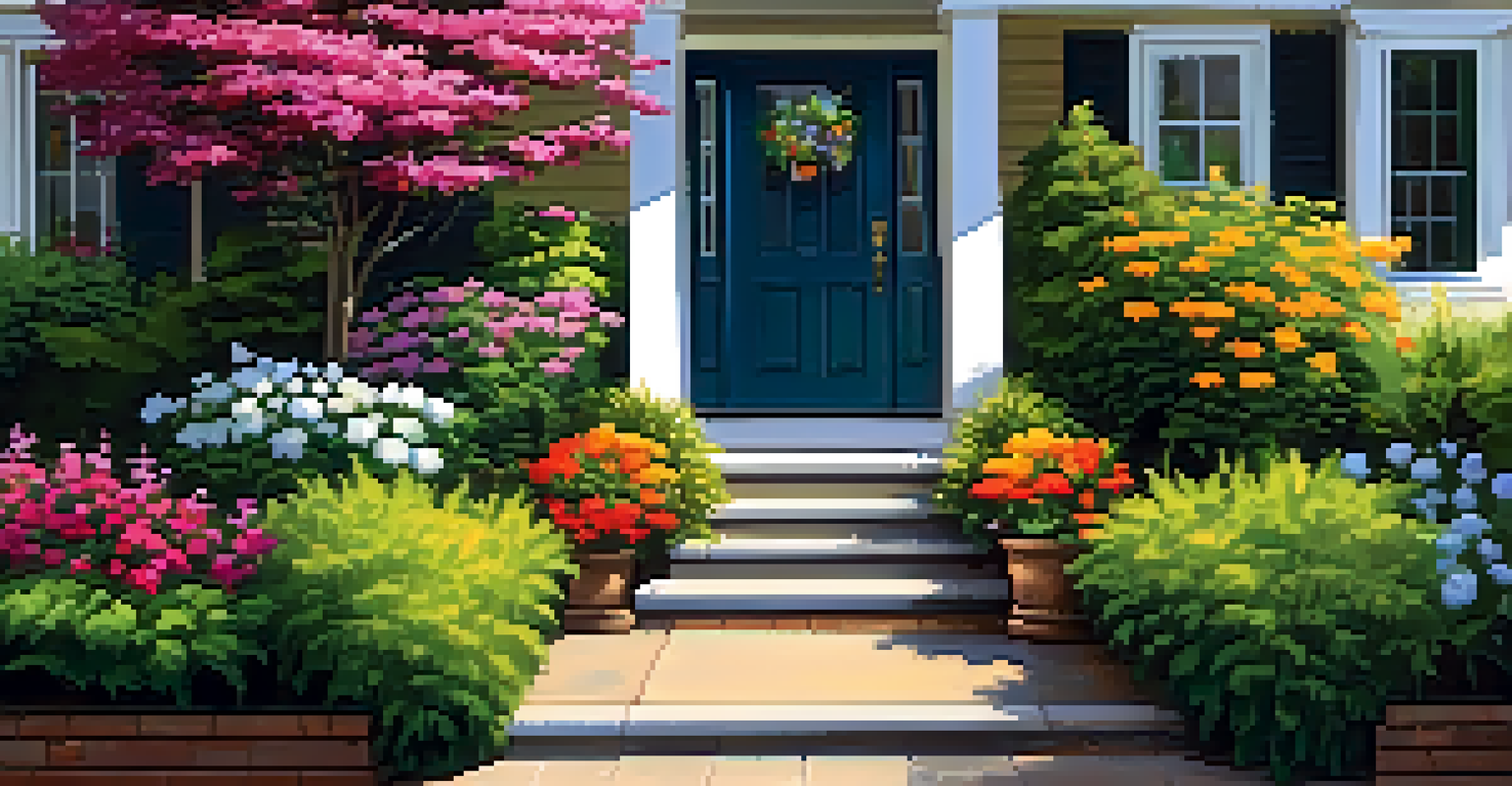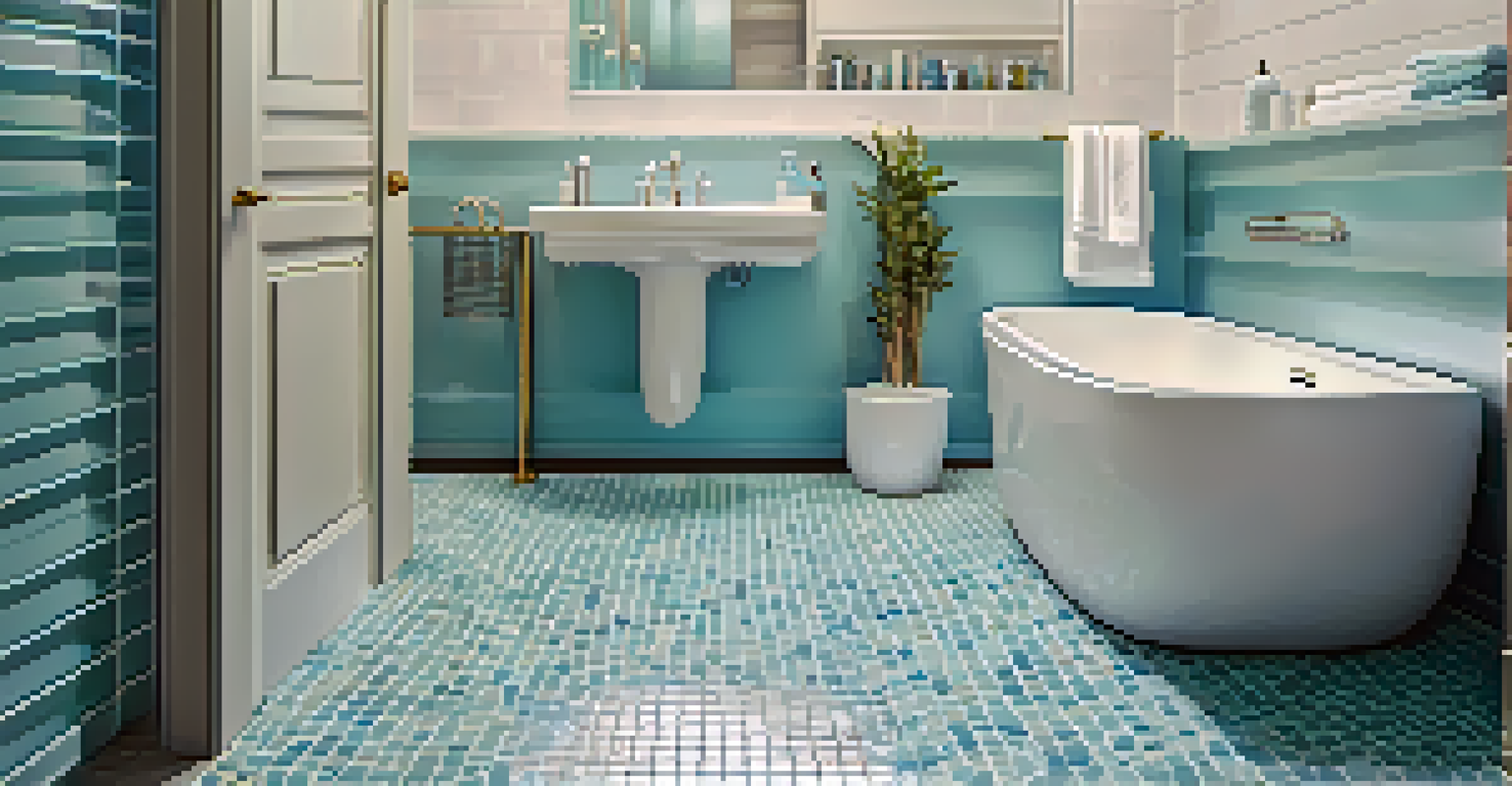How to Prevent Slips and Falls at Home

Assess Your Home for Potential Hazards
Start by walking through your home and identifying areas that may pose a risk. Look for loose rugs, uneven flooring, and clutter that could trip someone up. Small changes can make a big difference, so take note of everything that seems out of place.
Safety isn't expensive, it's priceless.
Consider the lighting in each room as well. Poorly lit areas can be a significant factor in slips and falls. Installing brighter bulbs or adding night lights in hallways and stairs can enhance visibility and safety.
Lastly, don't forget about outdoor spaces. Ensure walkways are clear and well-maintained. Repair any cracks or holes in the pavement to prevent falls when entering or exiting your home.
Keep Floors Clean and Dry
Wet or dirty floors are a leading cause of accidents at home. Make it a habit to clean spills immediately and use mats in entryways to catch excess moisture from shoes. This simple practice can significantly reduce the risk of slipping.

Invest in a sturdy mop or floor cleaner that can efficiently tackle wet messes, and encourage family members to do the same. Regularly cleaning your floors not only helps prevent slips but also keeps your home looking inviting.
Identify and Fix Home Hazards
Regularly assess your home for potential risks like loose rugs and poor lighting to enhance safety.
If you have pets, be especially vigilant about their messes, such as water bowls or tracked dirt. A little extra attention can go a long way in maintaining a safe environment.
Choose Appropriate Footwear at Home
The type of shoes you wear indoors can greatly affect your stability. Opt for footwear that has non-slip soles to help you maintain a firm grip on various surfaces. Flip-flops or socks can increase the risk of slipping, especially on smooth floors.
An ounce of prevention is worth a pound of cure.
Consider using house shoes or slippers that provide both comfort and support. These options can help you navigate your home safely while still feeling relaxed.
Encouraging family members to follow the same footwear guidelines is crucial. A collective effort at home ensures everyone stays safe and reduces the risk of falls.
Install Handrails and Grab Bars
Handrails and grab bars are essential safety features in any home, especially for areas like staircases and bathrooms. Installing grab bars in the shower or beside the toilet can provide much-needed support for anyone who may struggle with balance.
Ensure that handrails are securely fastened and extend the entire length of the stairs. This added support can help prevent falls, particularly for children or elderly family members.
Maintain Clean, Dry Floors
Promptly clean spills and use mats to prevent slips on wet or dirty floors.
Don’t overlook the importance of using handrails yourself. They’re not just for those who need assistance; they can provide an extra layer of security for everyone in your home.
Maintain Clear Pathways and Clutter-Free Spaces
A clutter-free home is not just aesthetically pleasing; it’s safer too. Regularly declutter your living spaces to minimize the risk of tripping over items left on the floor. This is especially important in high-traffic areas like hallways and living rooms.
Make a habit of keeping frequently used items within easy reach to avoid unnecessary bending or stretching. Consider storage solutions that keep things organized and out of the way.
Encourage family members to participate in maintaining a tidy home. A team effort helps everyone stay safe and promotes a culture of safety within the household.
Consider Non-Slip Floor Treatments
If you have slippery floors, non-slip treatments can provide an extra layer of protection. Anti-slip coatings or mats can be applied in areas prone to moisture, like kitchens and bathrooms. These products can significantly reduce the risk of falls.
When choosing flooring materials, consider options like textured tiles or carpets, which offer more grip than shiny surfaces. While aesthetics are important, safety should always be a priority in your choices.
Use Supportive Footwear
Wearing non-slip shoes at home can significantly reduce the risk of falling on smooth surfaces.
Regularly inspect these treatments to ensure they remain effective. Over time, wear and tear can reduce their effectiveness, so it's essential to keep an eye on their condition.
Educate Family Members on Safety Practices
Creating a culture of safety in your home starts with education. Discuss the importance of being aware of surroundings and following safety practices, especially for younger children and older adults. Share tips and reminders about how to navigate the home safely.
Consider setting up safety drills, such as what to do in case of a fall or how to use handrails properly. This proactive approach can empower everyone in the household to take responsibility for their safety.

Make safety a regular topic of conversation. By keeping it at the forefront of family discussions, you reinforce its importance and encourage everyone to remain vigilant.